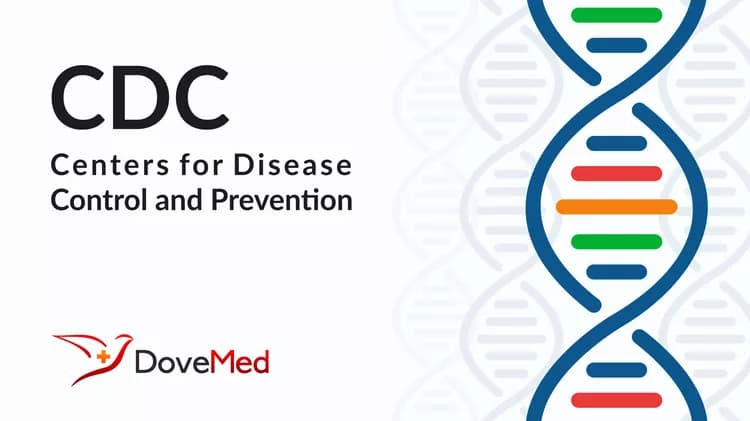
Teen pregnancy rate reaches record low in 1997
Teen pregnancy rate reaches record low in 1997
America's teenagers were less likely to become pregnant in 1997 than at any time since 1976, when national data on pregnancy rates first became available, according to a new report from the Centers for Disease Control and Prevention which updates trends in pregnancy and births in the United States. The teen pregnancy rate fell 19 percent from its all time high in 1991 to reach a record low of 94.3 pregnancies per 1,000 women ages 15-19 in 1997.
"The fact that fewer teens are becoming pregnant is encouraging news," said Dr. Jeffrey P. Koplan, CDC Director. "Few teens are ready for the challenges of parenthood. When they delay this responsibility it enables them to gain the education and maturity they need to be good parents and good citizens," he said.
The teen pregnancy rate had risen from the mid-1980's and reached a peak in 1991; the 1997 rate is actually 10 percent lower than the 1986 rate when the upturn began.
Teenage pregnancy rates declined for all teenagers with the steepest declines among non-Hispanic black (down 23 percent) and white (down 26 percent) teenagers. The overall decline is attributable to both reduced rates of live births (down 13 percent) and abortions (down 32 percent). Teen birth rates are available through 1999 and show a continued decline, totaling 20 percent since 1991.
Among the factors believed to be driving this downturn in teen pregnancies are increases in condom use, the adoption of the effective injectable and implant contraceptives, and the leveling off of teen sexual activity.
There were an estimated 6,192,000 pregnancies among women of all ages in the U.S. which resulted in a live birth, induced abortion or fetal loss (miscarriages or stillbirths) in 1997, nearly 600,000 fewer than in 1990 when the number of pregnancies reached its peak. The pregnancy rate in 1997 was 103.7 pregnancies per 1,000 women aged 15-44 years, 10 percent lower than in 1990 and the lowest rate since 1976.
Pregnancy rates have declined for women under 30 and risen for older women. Though the greatest increases in pregnancy rates were among women 35-39 (up 9 percent) and 40-44 (up 21 percent), pregnancy rates remain highest for women in their twenties.
The report, "Trends in Pregnancy Rates in the United States, 1976-1997: An Update," was prepared by CDC's National Center for Health Statistics and tracks the effects of changes in sexual activity, marriage patterns, contraceptive use, attitudes and economic and educational opportunities on pregnancies and pregnancy rates in the United States. Using complete counts of births from the birth registration system and estimates of abortions and fetal loss, the report examines patterns by age, race and Hispanic origin and marital status.
"It is essential to monitor these important indicators of childbearing and reproductive health, " said Dr. Edward J. Sondik, Director of CDC's National Center for Health Statistics.
The six million-plus pregnancies in 1997 in the U.S. resulted in 3.9 million births, 1.3 million induced abortions and almost a million fetal deaths. This means that 63 percent of pregnancies ended in a live birth, 21 percent in abortion and 16 percent with a miscarriage or stillbirth. Trends in birth, abortion and fetal loss have varied over the past twenty years. Between 1990 and 1997 the rates for all three have declined: live births, down 8 percent; 19 percent for induced abortions, and 4 percent for fetal loss.
The pregnancy rate for married women has risen slightly to 113.8, returning to 1994 levels. The rate remains 10 percent lower than in 1990. The pregnancy rate for unmarried women continues to decline, now 9 percent below the 1990 level. There remains a marked difference in pregnancy outcomes based on marital status. Among married women 74 percent of pregnancies ended as live births and only 7 percent in abortions. While among unmarried women, 47 percent ended in live births and 41 percent ended in abortions.
Changes in pregnancy rates may be linked to changing attitudes towards premarital sexual activity, better contraception measures, and increased economic opportunities during the 1990s.
The report can be viewed or downloaded from www.cdc.gov/nchs/. Additional tables are also available on the website.
CDC protects people's health and safety by preventing and controlling diseases and injuries; enhances health decisions by providing credible information on critical health issues; and promotes healthy living through strong partnerships with local, national and international organizations.
Related Articles
Test Your Knowledge
Asked by users
Related Centers
Related Specialties
Related Physicians
Related Procedures
Related Resources
Join DoveHubs
and connect with fellow professionals

0 Comments
Please log in to post a comment.